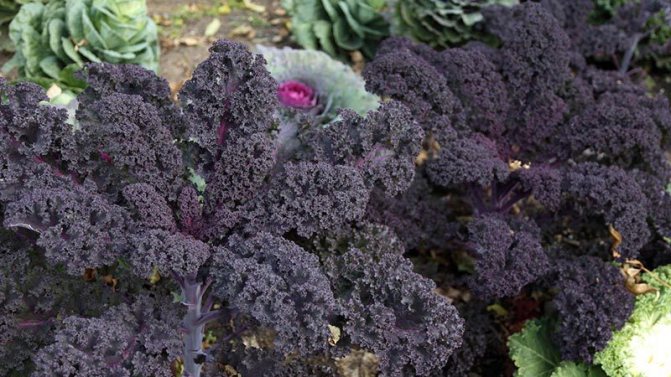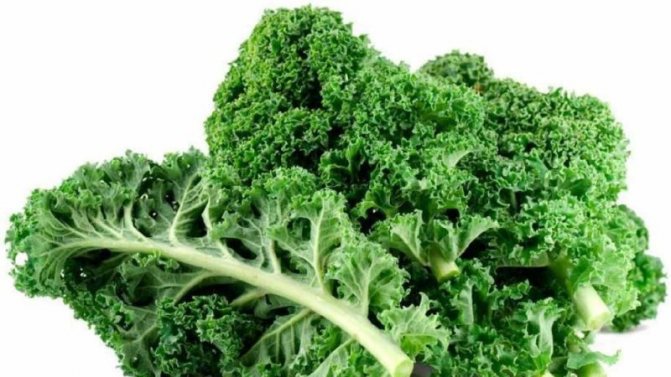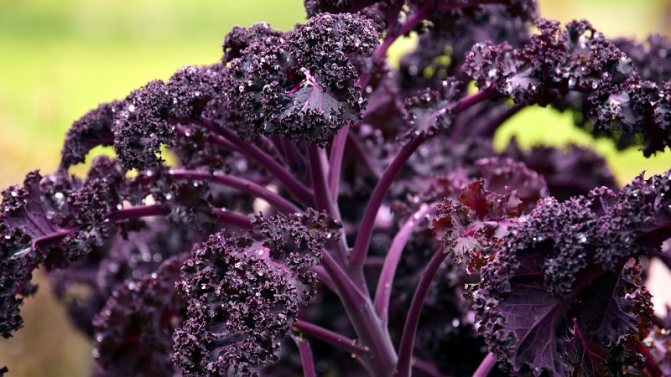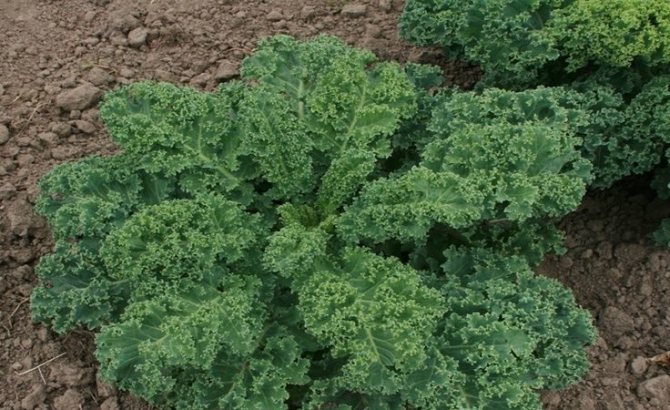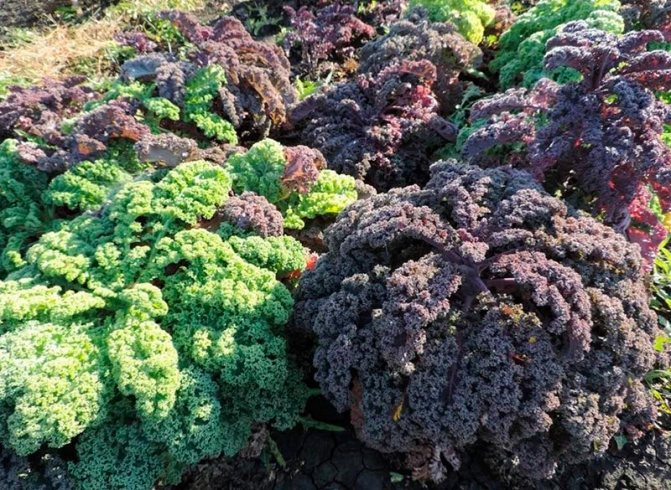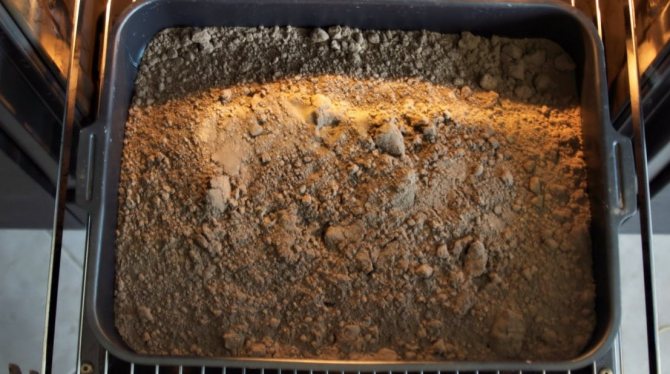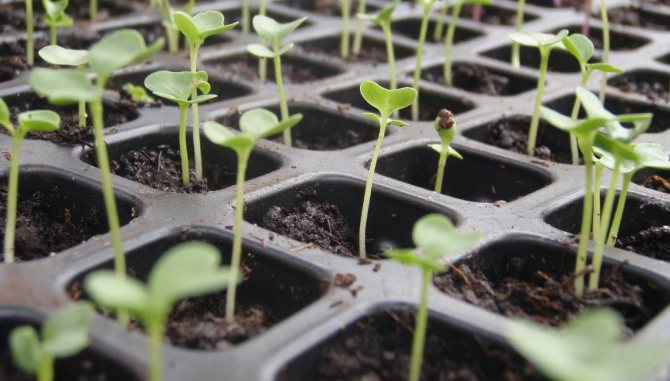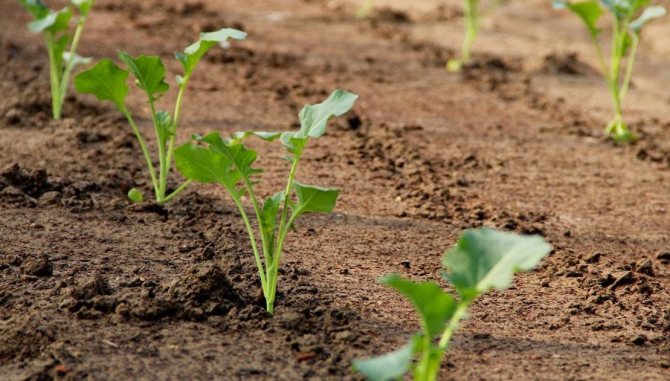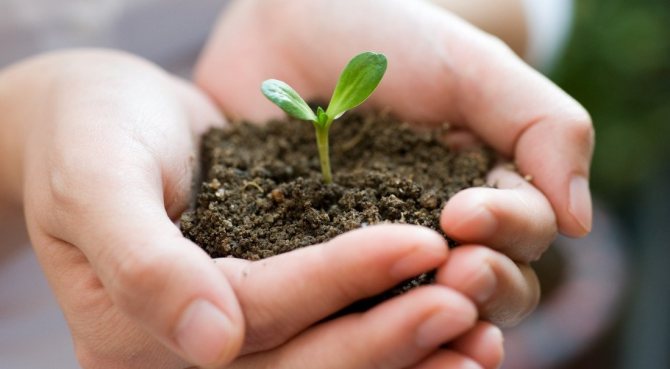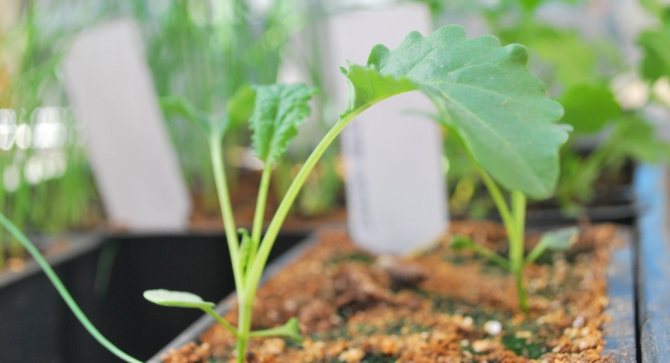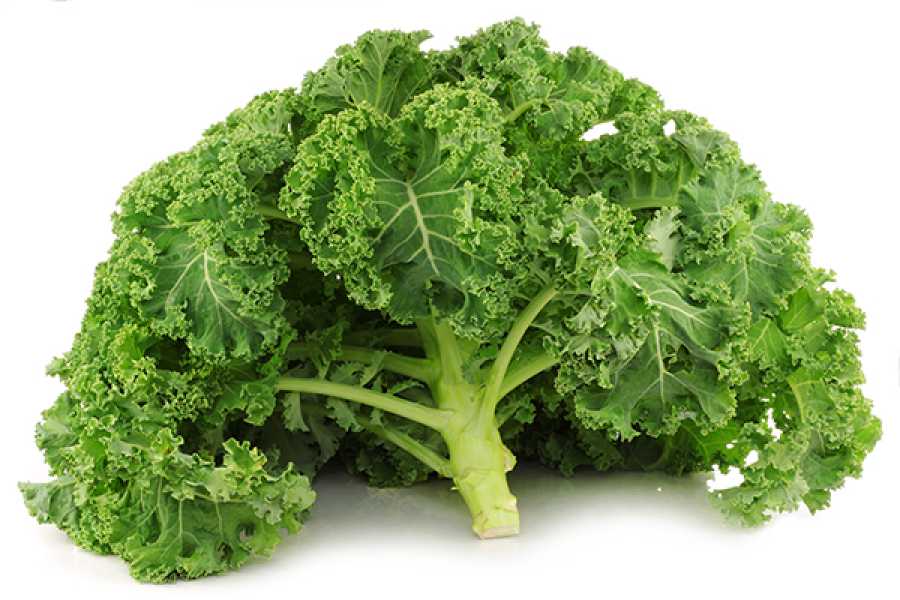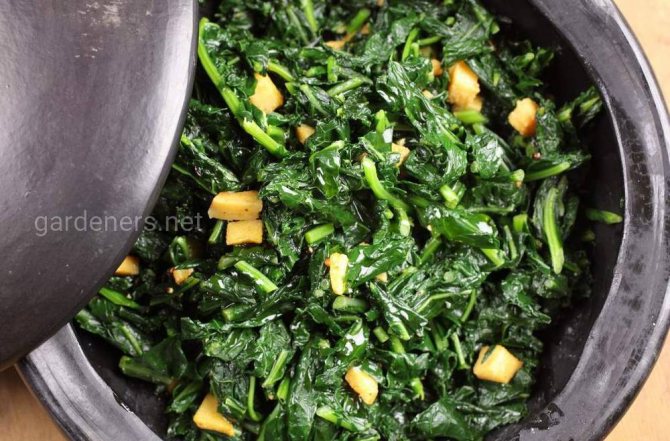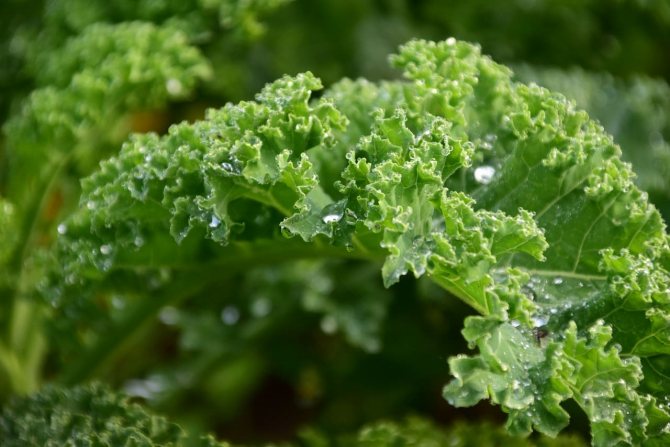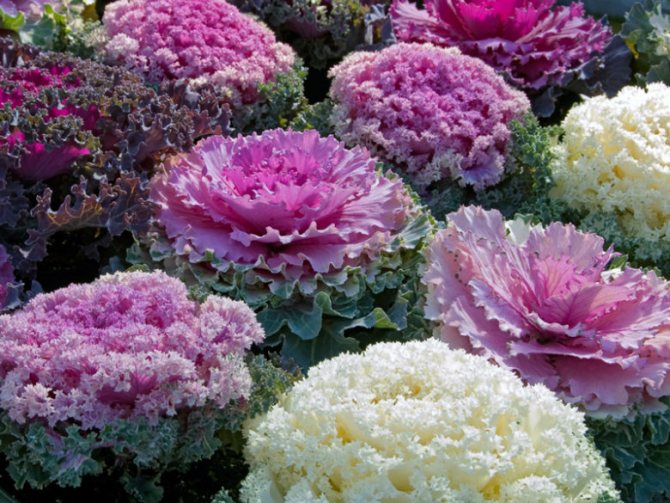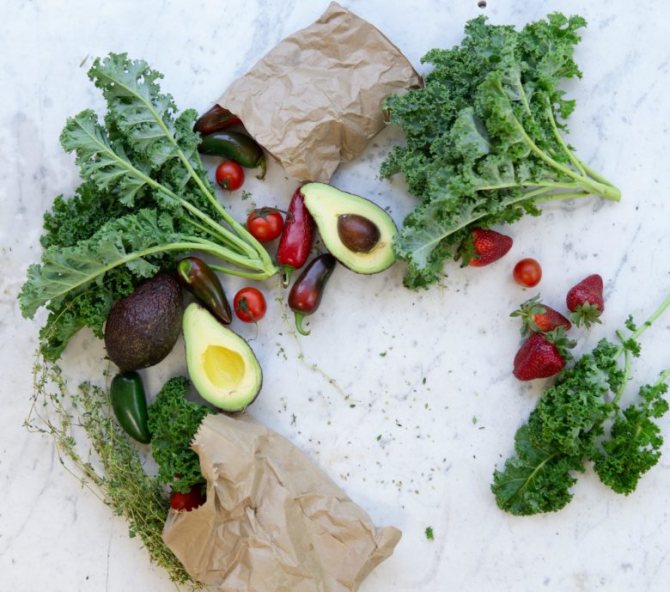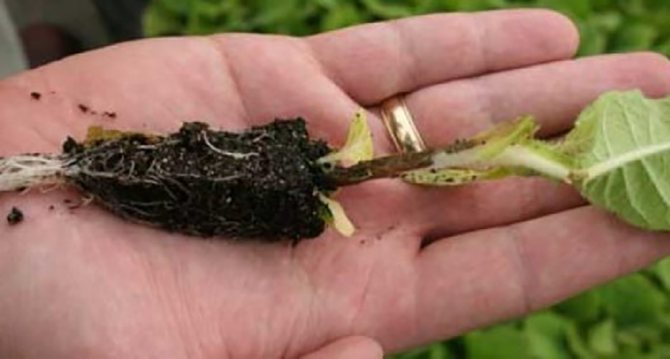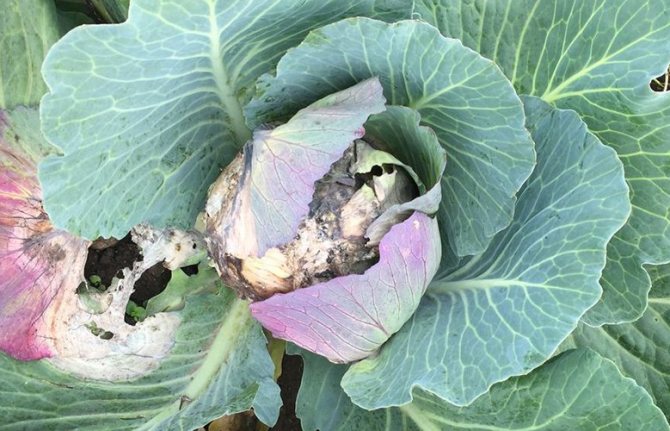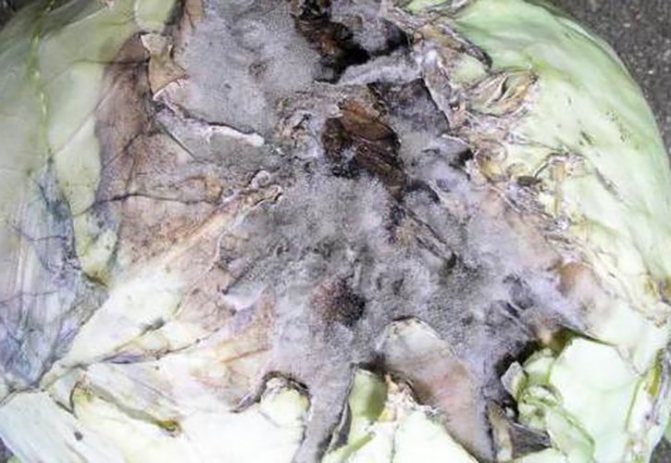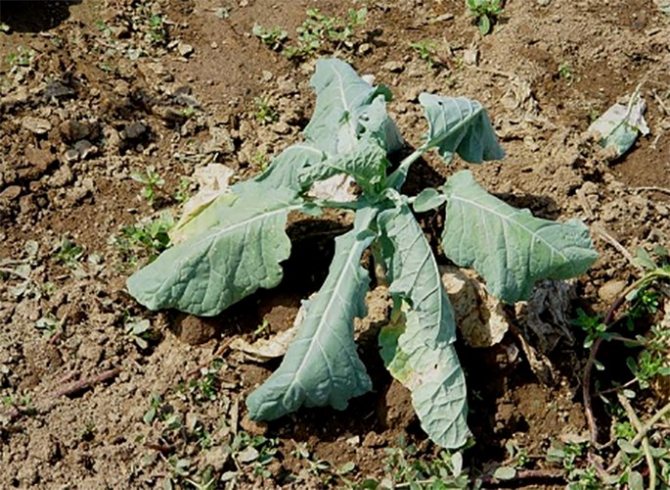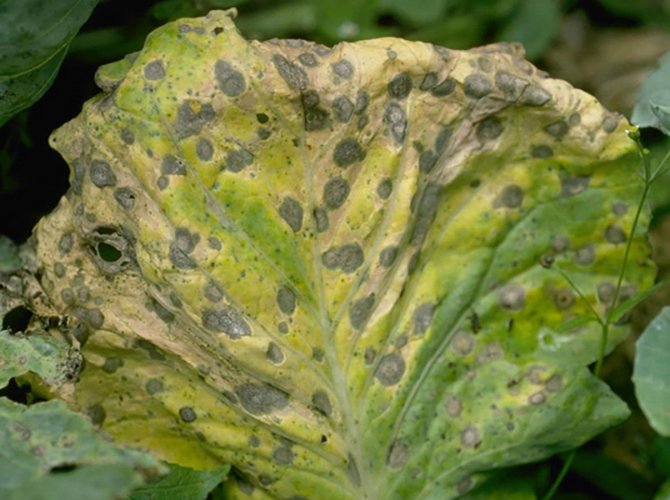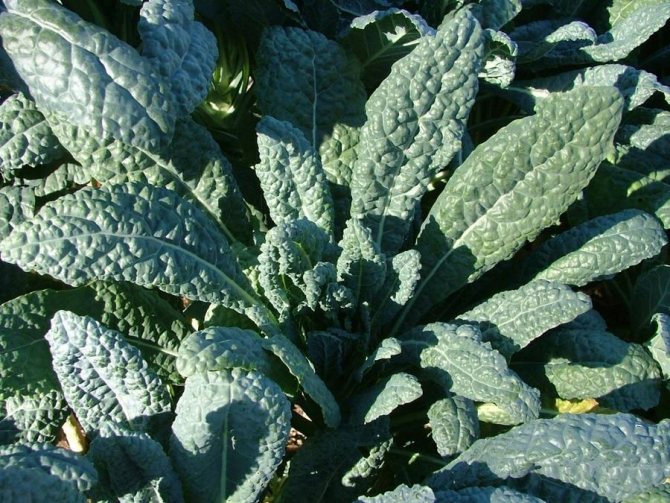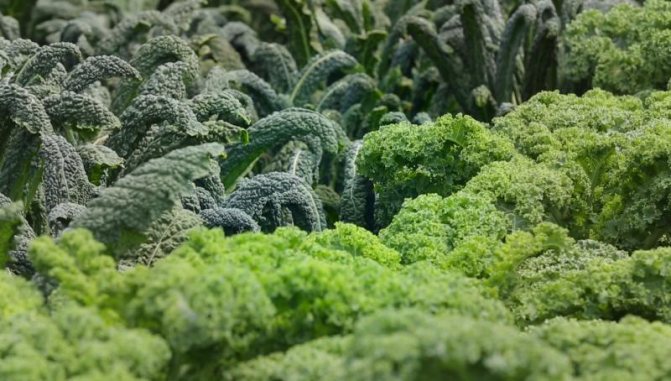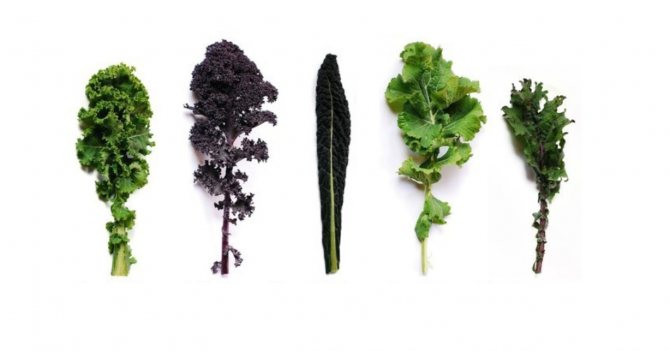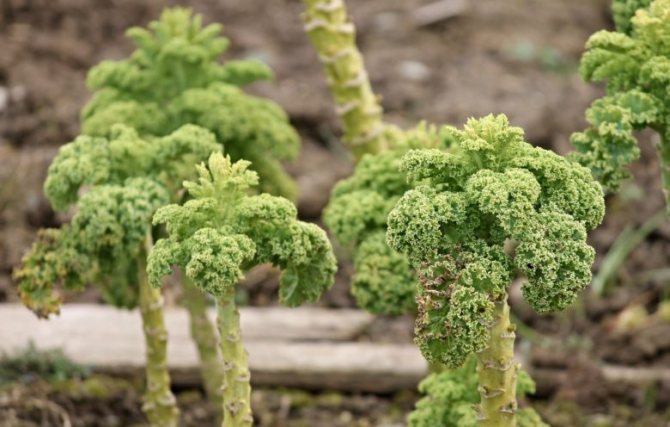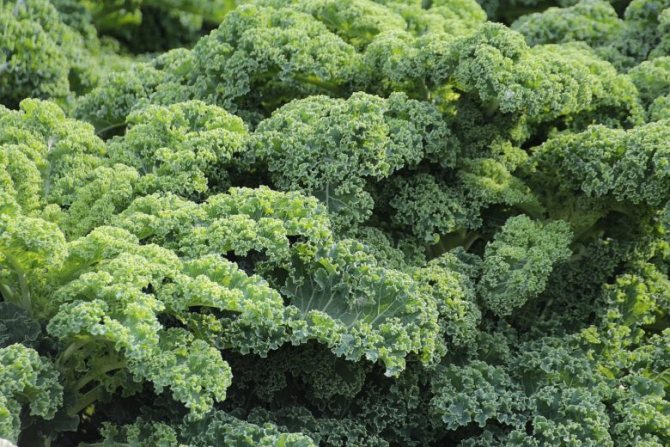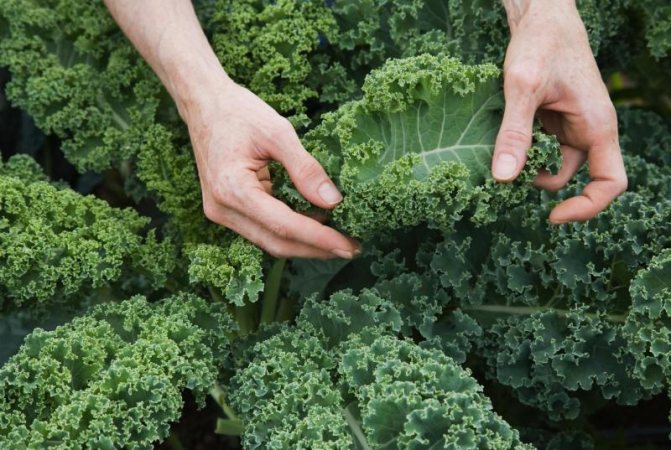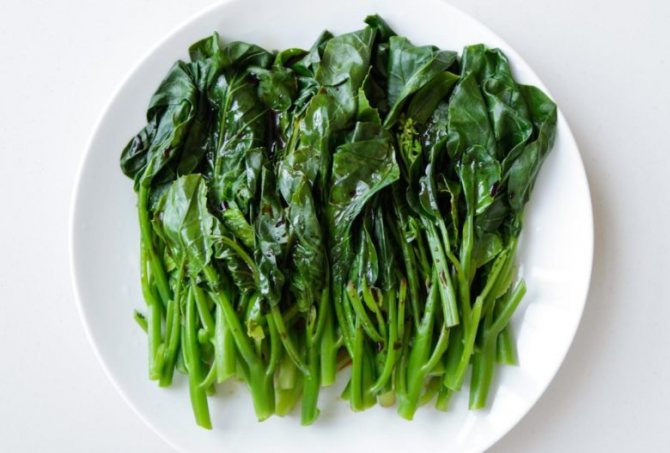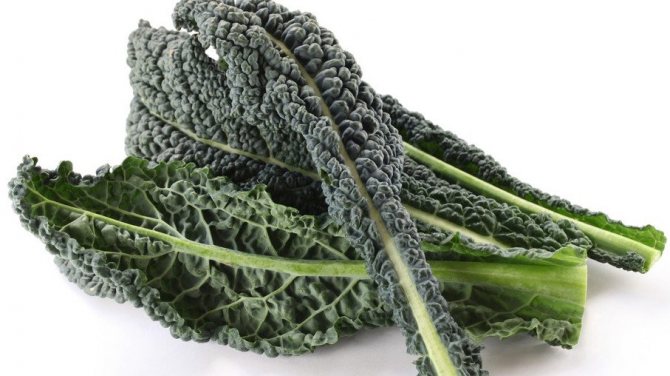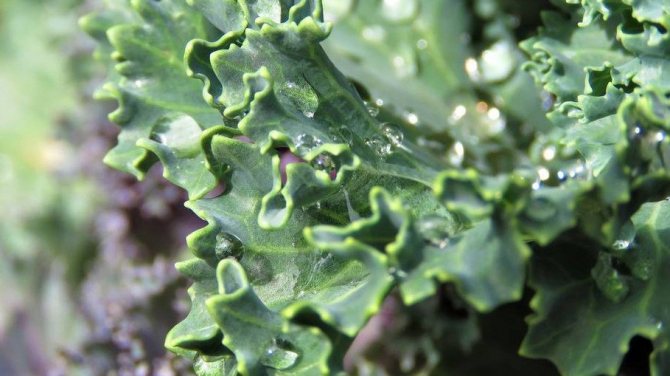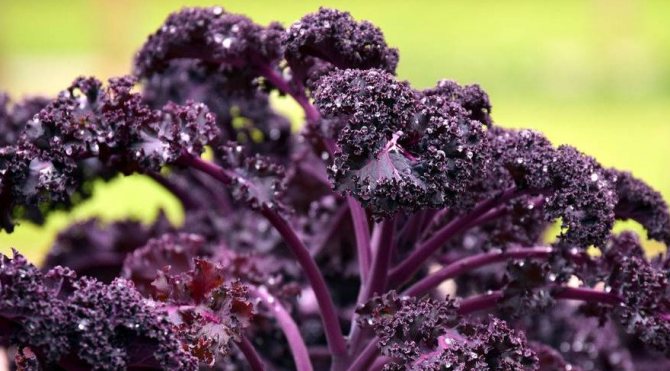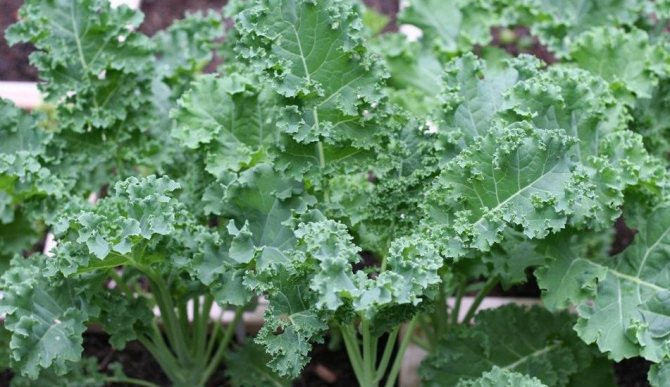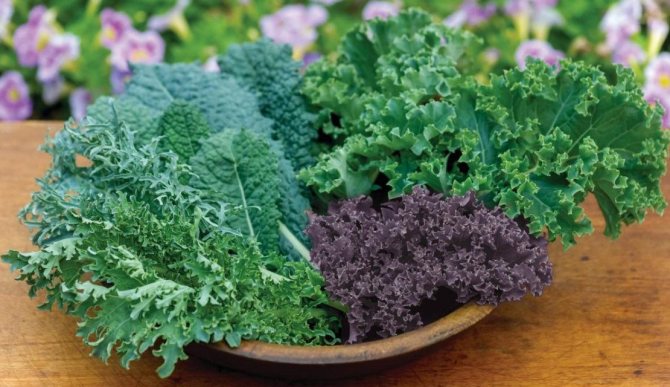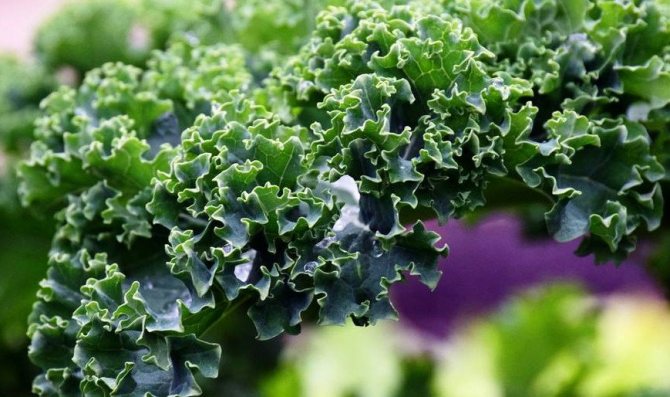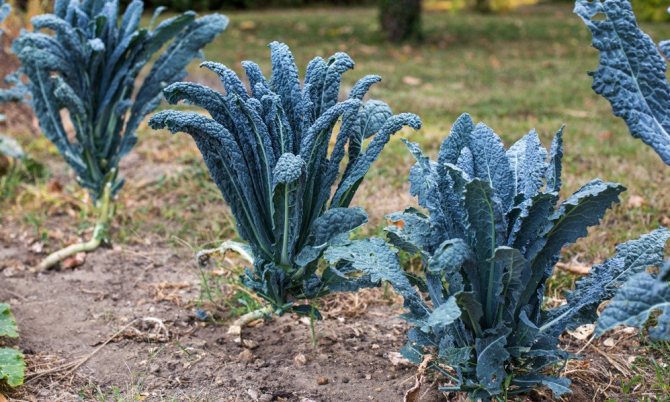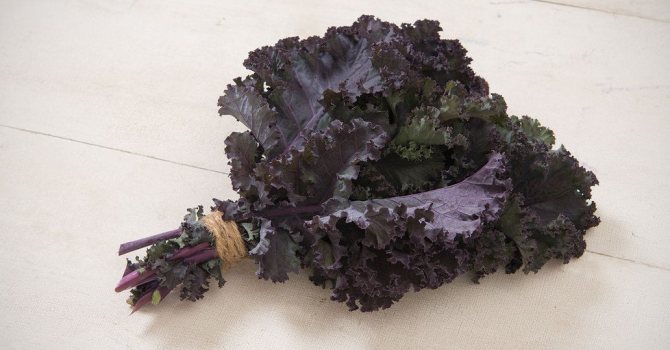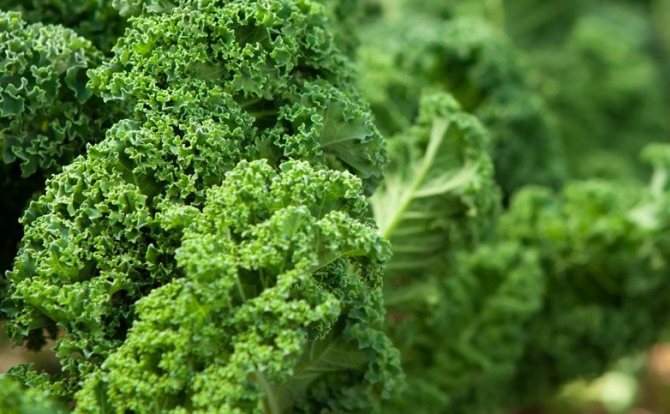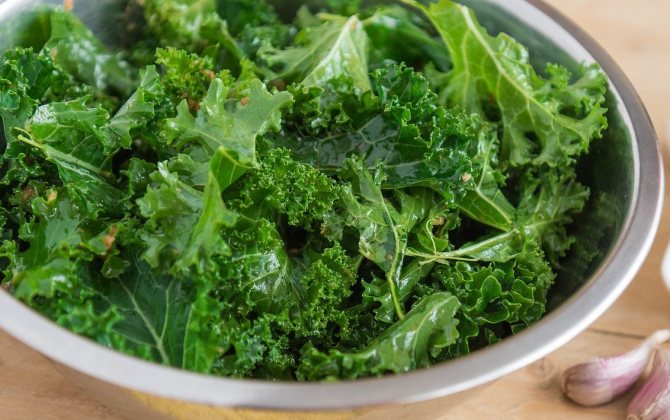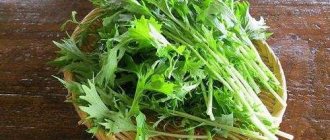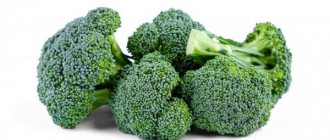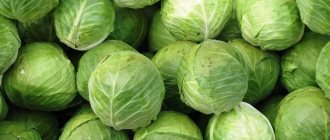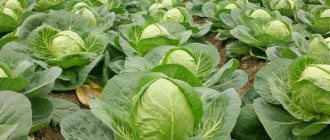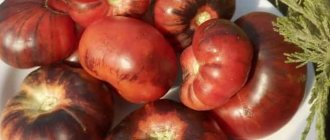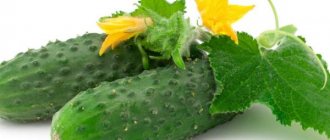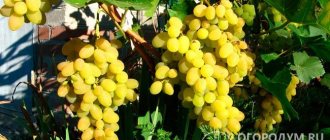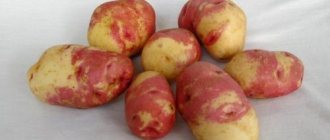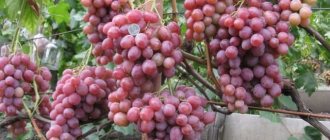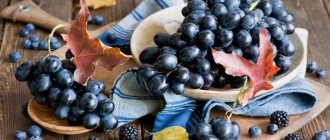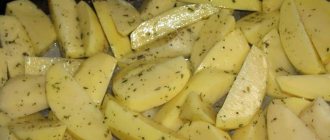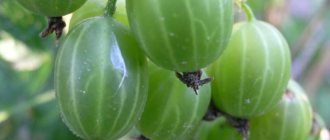Kale cabbage has several more common names: kale, kale salad or Kelly cabbage, Browncol. This unusual view came from the east. This article will tell you in detail everything about Kale cabbage: what it is, what it looks like, what is good, and so on.
Despite the fact that this culture is still a rare visitor to Russian summer cottages, experienced gardeners already know firsthand about its exceptional properties, so the numbers of its fans are growing from year to year.
In order to understand a culture such as collard greens, what it is, how it looks, you should first familiarize yourself with its biological properties. The species combines a huge amount of nutrients. The culture contains more iron than beef. The protein in the vegetable is easy to digest.
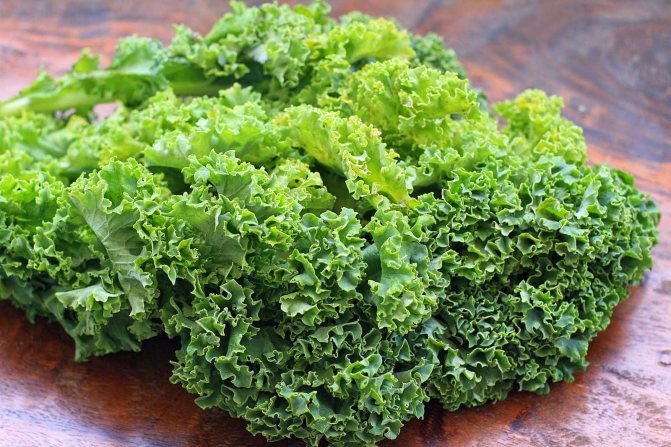
Curly cabbage
Kale cabbage: photo description
In recent years, more and more Russians, coming to the store, are trying to buy Kale collard greens. But it is still rare on the shelves. But the owners of restaurants and cafes are increasingly listing dishes made from this leafy vegetable on the menu.
Kale varieties are still rare guests in the gardens. That is why we want to attract the attention of Russians so that Keil collard becomes a permanent vegetable crop. After all, it contains many useful substances that have a beneficial effect on the human body.
European vegetable growers have been growing the crop for a long time. If we talk about the history of the kale cabbage, then it goes back to antiquity. In the 17th century, attitudes towards the leafy vegetable changed, as more yielding varieties that were resistant to diseases appeared.
In Russia, the Kale cabbage variety was popular until the 18th century in the northern regions. Collard was prized for its cold resistance and the ability to get fresh vegetables in harsh conditions.
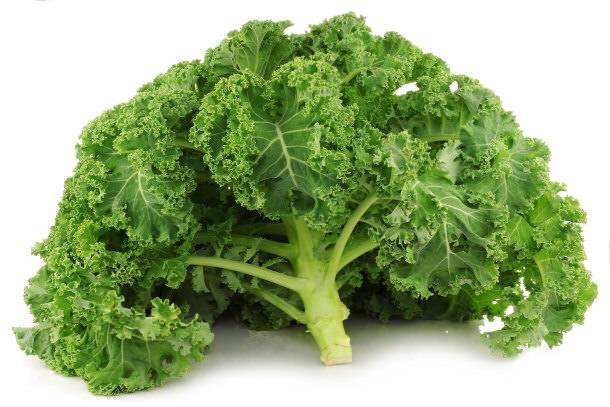

Kale is an annual herb with a shortened stem. The leaves are arranged on petioles in several tiers.
The cabbage variety has an unusual appearance. The leaves themselves are curly, and there are well-visible waves along the edges. This cabbage is also called curly cabbage. Only leaf blades without a stem and petioles are eaten. Animals can be fed the whole plant.
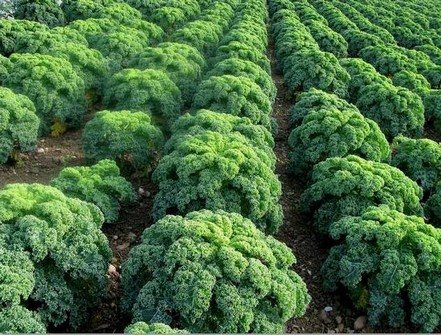

The color palette of the leaves is varied: green, red, gray, purple, depending on the variety. That is why Keil is often planted in flower beds as ornamental plants. Look at the photo above, how unusual the beds with Kale collard look.
The height of the Keil cabbage bush is within 25-50 cm. The leafiness is strong, after cutting off some of the leaves, the cabbage continues to bear fruit. But heads of cabbage are not formed.
How kale is eaten
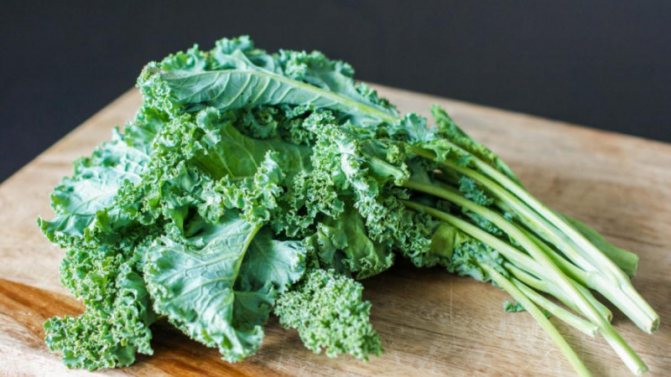

Leaves are eaten both fresh and after preliminary heat treatment. Young leaves have excellent taste, have a delicate texture, are devoid of bitterness and astringency.
The stem and head of cabbage are too hard, so they are used as forage crops. In cooking, juice is squeezed out of the stem, which is then used as a dressing, added to vegetable cocktails.
Characteristic
A special feature of Keil collard is the ability to grow in one place for several years, but only in the southern regions. In favorable conditions with good shelter, the cabbage variety winters well and provides early vitamin leaves.
Kale collard after wintering:
Positive points
- Kale cabbage leaves are a dietary product. They contain, in addition to various components, 9 amino acids that are found in meat. Many green vegetable lovers call it "new beef."
- The rapid growth of kale kale provides an early harvest of vitamins.
- Due to the presence of zaexanthin and lutein, regular consumption of Kale leaves protects the eyes from ultraviolet radiation.
- The trace elements contained in cabbage remove toxins and radionuclides from the body.
- The elements that make up the kale collard are not only easy to digest, but also provide high vital activity of the body.
- The presence of calcium, magnesium, phosphorus and zinc can help curb the development of cancer.
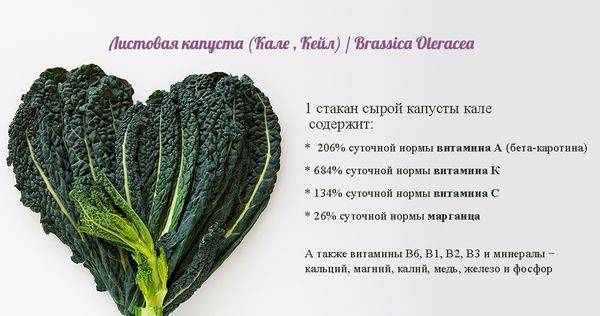

Unfortunately, despite such optimistic positive properties, Kale leafy varieties have contraindications associated with individual intolerance. In addition, in case of kidney disease, the vegetable should also not be eaten, since the leaves contain oxalic acid.
Kale cabbage, as can be seen from the description and in the photo, is somewhat similar to lettuce.
Today, thanks to the efforts of breeders, the variety of collard greens is represented by the following varieties:
- The most common variety is Kale Curly or Curly. The variety has soft, sweetish leaves. And the variety got the name for the special curliness of the leaf plates.
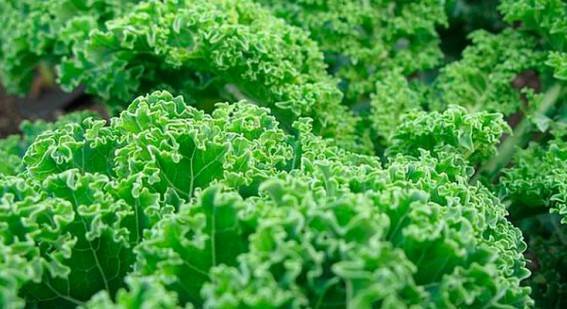

- The Tuscan Keil leaves are wrinkled, very thin.
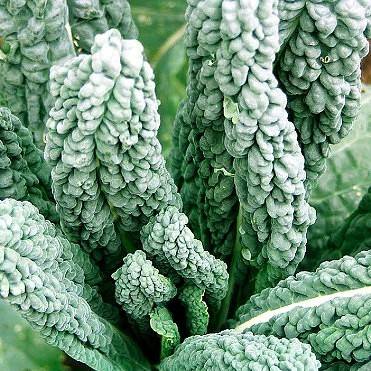

- The frost-resistant, fast-growing Premier cabbage also shouldn't be overlooked.
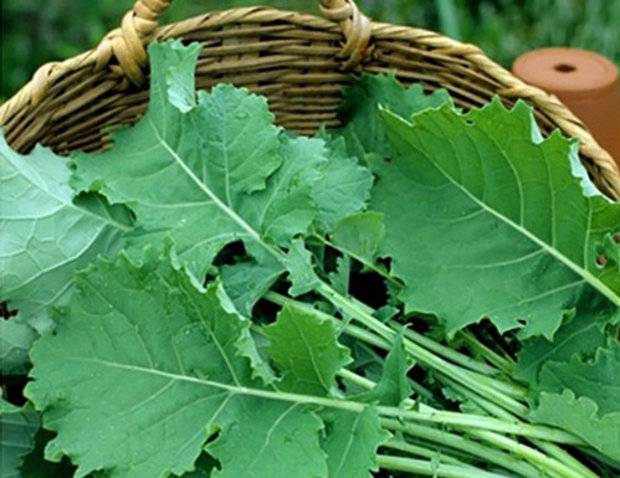

- The Siberian Keil variety is also cold-resistant, practically not affected by harmful insects.
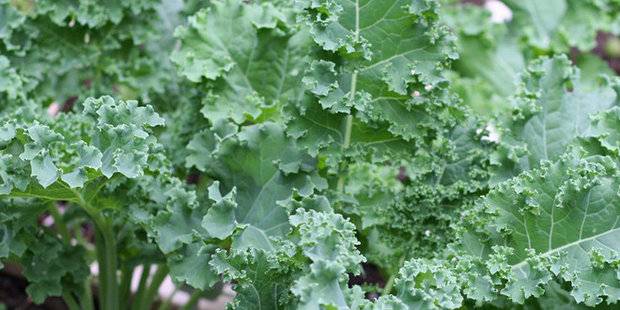

- Cale's Red Russian Collard has a vibrant color that is close to purple. Leaves with a pronounced wrinkle.
- Redbor F1 Kale collard greens are often used not only in salads, but also to decorate dishes.
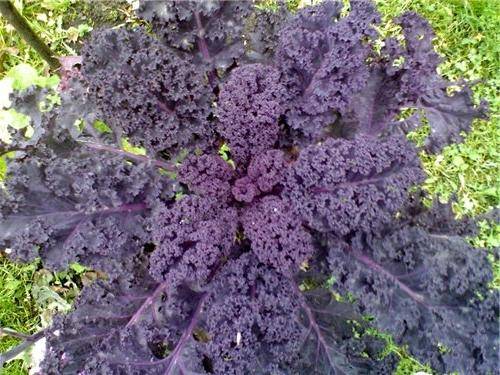

- The Keil Trostyanaya variety is valued for its large size, because cabbage often reaches a height of 190 cm. And the name comes from the fact that the thick stem is used as a cane.
You can prepare vitamin salads from kale kale with the addition of any ingredients. The vegetable is tasty in soups, stewed.
Harvesting and storage
The early ripe species allows the first harvest to be harvested in 60-90 days.
Important! Young cabbage leaves are much more tender than overripe representatives. If the plant has begun to bloom, then its use is no longer desirable.
You can cut the leaves when the height of the rosette reaches 20 cm. Harvesting is carried out in the early morning, this is due to the fact that in the early hours the leaf plates are saturated with moisture as much as possible due to dew.
The best place to store cabbage is in the refrigerator. The maximum shelf life is 1 week. Nutritionists advise freezing the vegetable: in this form, it fully retains all its beneficial properties for a long time.
Useful qualities
Kale has wild relatives. It was from them that she received, and later preserved, useful properties. If you read reviews about Kale cabbage, you can find a lot of interesting things.
The uniqueness of the leafy vegetable can hardly be overestimated. It is nutritious, superior to meat in many respects. The protein contained in kale is absorbed by the human body faster than the animal.
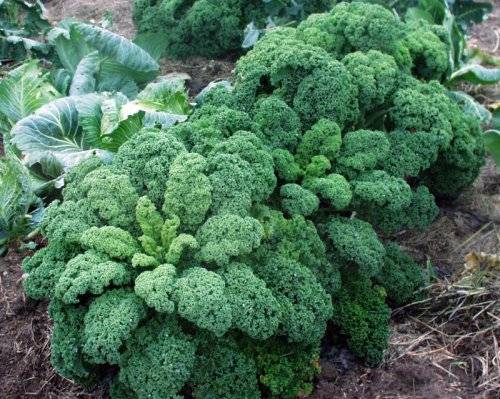

So why you need to engage in culture:
- Keil's leafy vegetable contains a lot of calcium. One gram of vegetable contains 1.35 ml of this element. Calcium is absorbed four times faster than this micronutrient from milk. Regular consumption of leafy greens will provide the human body to the fullest.
- 200 grams of kale leaves contain the daily protein requirement. Just as much as in meat. The amino acids in cabbage are absorbed faster than from beef.
- Any Kale kale is a natural antioxidant.
- The vegetable is highly valued by nutritionists who recommend it for the fight against excess weight. After all, the calorie content is extremely low - in 100 grams of green products, no more than 50 Kcal.
Kale cabbage, rich in all kinds of vitamins and microelements, should take its place in the gardens of Russians.
Chinese
This type of cabbage is also called Bok-choy, in composition it is similar to a white cabbage, the difference is only in appearance. The vegetable does not form a head ovary, the leaves have a rich green color. It is valued for the content of lysine, an amino acid that can cleanse the body of toxic substances.
Chinese cabbage is a source of longevity, it activates the body's immune forces and prolongs life.
The crop is harvested in June, which makes it possible to replenish the vitamin deficiency in the body. Due to the delicate structure of the leaf, the vegetable is included in the children's diet. To grow a useful crop, it is enough to adhere to the basic rules of agricultural technology. The only drawback of cabbage is considered to be a large stump, which occupies 50% of the vegetable. It is also used for cooking.
Beijing
Russian vegetable growers are just beginning to cultivate this variety. It is important for him to create comfortable conditions for growth. The plant can only withstand short-term drops in temperature (up to -7 degrees). The variety is capable of producing a crop 2-3 times per season, the duration of the growing season is only 50-70 days. The culture grows both outdoors and indoors. Pekingskaya is distinguished by a high degree of productivity, up to 900 centners of the crop are harvested from 1 ha.
Of the minuses, they note the exactingness of the soil, it must be well enriched with nutrients. The agricultural technology of this type has not been fully studied, which complicates the care of the plantings. In addition, the vegetable is susceptible to diseases and pests. You can sow seed directly into open ground. The optimal time for sowing is April - May.
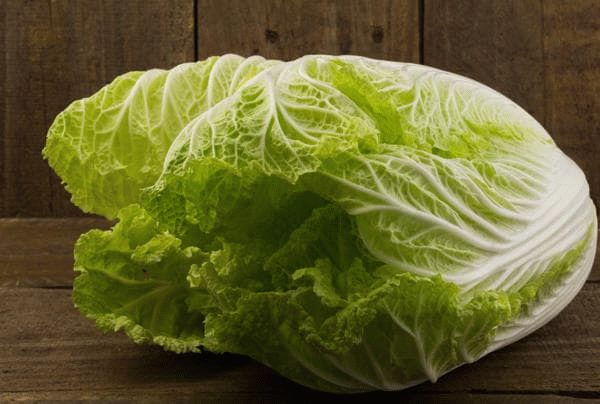

Bok choy
Belongs to the variety of Chinese kale, is one of the ancient cultures of China. The leaves are bright green and the petioles are white. Cabbage is known for its juiciness and savory taste. The head of cabbage does not form, the leaves are collected in a rosette, the diameter of which is about 30 cm. The average length of the vegetable is 15 cm. The petioles are similar in taste to spinach.
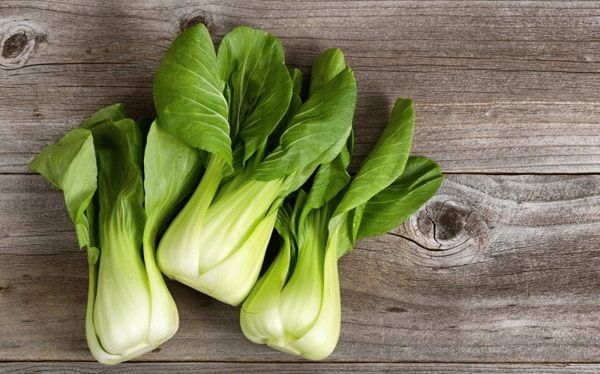

Growing features
Unlike representatives of the cabbage family, Kale has a negative attitude towards transplanting. Therefore, it is most often propagated by sowing seeds directly into the ground. Although you can grow seedlings in separate containers. Subject to all agrotechnical standards, you can grow a tasty and healthy vegetable without much effort.
Seedlings are the key to success
Consider a seedling method for growing kale collard greens:
- Seeds are sown 40-50 days before planting in open ground. Separate containers are filled with nutrient soil. You need to put 2-3 seeds in each glass.
- The seed is immersed in the soil by 1 cm; with deeper sowing, seedlings do not appear for a long time. To obtain friendly shoots of future seedlings, optimal conditions are created: the air temperature, if the plants are grown in an apartment, should be at least 24 degrees. A film is put on the container, which is removed as soon as the plants begin to hatch.
- In the future, 16 degrees are enough for the full development of seedlings. But lighting should be maximized at all stages of growing.
The seedlings are ready in 6 weeks and can be planted in the ground. At this point, the curl of the leaves is clearly visible. It is necessary to transplant seedlings from the container carefully so as not to damage the roots. Indeed, the description said that the survival rate is low. That is why it is better to sow seeds directly into the ground.
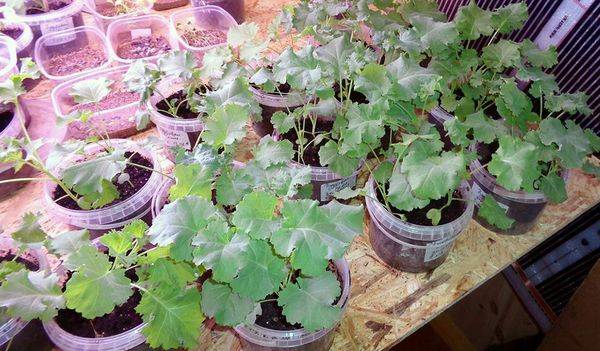

Sowing seeds in the ground
Growing a leafy vegetable requires fertile land. It is better to choose the beds after legumes, potatoes, cucumbers or tomatoes.The soil is prepared in autumn, humus, compost (at least 3 kg for each square meter), as well as mineral fertilizers are added.
The acidity of the soil should vary in the range of 5.5-6.8. It is difficult to check independently without laboratory analysis. But you can observe what weeds are growing in the garden. If they are filled with wood lice, then you need to add granular sulfur. With low acidity, more compost is added to the soil.
The site should be in an open place, although partial shade is also not prohibited. Sowing is done in April, when the soil warms up to +5 degrees.
The holes for embedding seeds are placed at a distance of 45 cm. Several seeds are placed in each of them, watered and covered with a transparent material or a piece of glass. After 4 days, the shelter will have to be removed, since the emerging seedlings need a lot of light.
Plant care in soil
You don't need any special knowledge to grow Kale collard greens. If a draft-free area with good lighting is chosen correctly, the result is ensured.
Read also: DIY oyster mushroom mycelium
The proximity of groundwater adversely affects the development of collard greens. Therefore, if it is impossible to find another site, the bed is raised, a large layer of drainage is poured, and fertile soil on top. In the future, you need to water, loosen the soil or mulch it with a bush height of 15 cm, feed it.
As for dressings, they are carried out every 6-8 weeks, as the harvest progresses. You do not need to overfeed, this will lead to leaf rot. You can use infusion of mullein, chicken droppings, extract of wood ash and herbal infusion. It is useful to sprinkle the plants with dry ash after watering.
Kohlrabi
The head, which looks like a turnip with leaves, is high in vitamins, fiber, minerals, fructose, sucrose, which is very important for people with diabetes. The plant has a root, turnip or spherical stem, leaves located at the very top. There are heads of cabbage of different colors: green, snow-white, purple, yellow. Cabbage has a compact size due to the formed stem and elongated leaves.
It belongs to early maturing crops, technical maturity is reached 55-60 days after planting in the ground. The vegetable is grown 2 times per season. The seeds grow well in the open field, the plant loves well-lit beds. During harvesting, the main thing is not to miss the harvest time, otherwise the pulp becomes rough and tasteless. The vegetable is used mainly for salads.
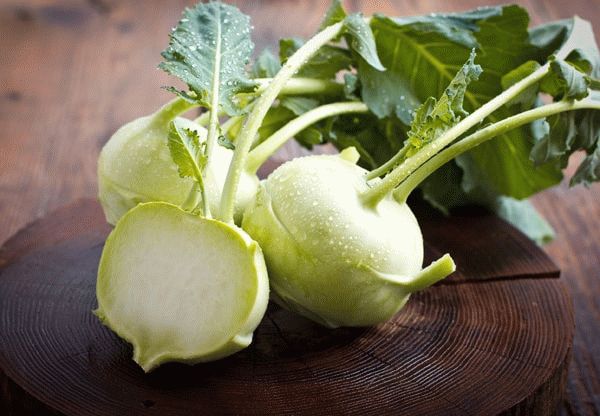

What and who is harmful to Cale varieties
Collard greens suffer the most from:
- rape sawfly;
- scoops and cabbage flies;
- aphids and cruciferous fleas;
- flower beetle and wireworm;
- slugs and weevils.
Such a number of those who like to profit from the leaves speaks only of the high taste and useful properties of the varieties of Kale cabbage.
- Constant dusting with ash or tobacco dust.
- Spraying with vinegar and chicken manure infusion.
- Watering over the leaves with solutions of ammonia or iodine.
- Special preparations strictly according to the instructions.
Pests and diseases
Kale, like other types of cabbage, often suffers from the invasion of the following insect pests: scoop butterfly, cabbage fly, aphid, various types of caterpillars and slugs.
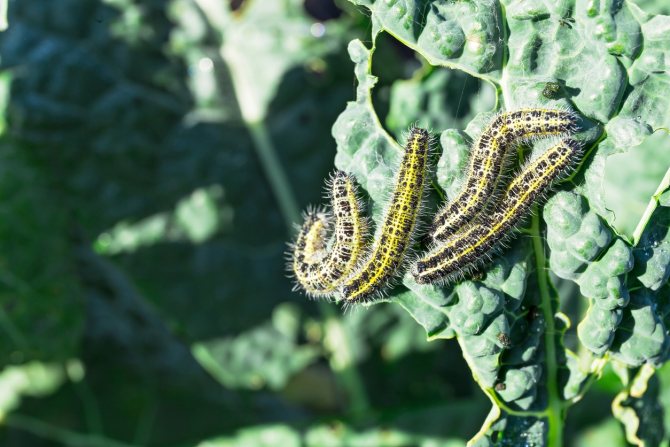

Pests
To save the harvest, it is necessary to regularly carry out preventive measures:
- daily processing of plant foliage with dry ash;
- spraying cabbage with a weak vinegar solution;
- sprinkling with the addition of iodine or ammonia.
If natural remedies do not work, you can resort to proven chemicals:
- Aliot;
- Kemifos;
- Shar Pei;
- Bankol and many others.
On a note! The use of any means of protection implies not only compliance with the instructions for use, but also basic rules of personal safety.
Kale cabbage: useful properties, cultivation, photo
Greetings to all readers!
Today I want to tell you about an amazing vegetable - cabbage Kale (Kale), about the beneficial properties, growing and a little photo of this beauty. In the comments to the article "Types of cabbage with photos and names" Natalia asks about Kale cabbage. As it turned out, this cabbage is just a storehouse of various nutrients and vitamins, a godsend for nutritionists and just people who want to eat tasty and healthy.
Outwardly, it is very decorative and will decorate any garden. In another way, it is also called browncol or grommet. This cabbage is considered "wild". That is, the ancestor of all different types of cabbage.
In America and England it is called "Russian red cabbage", its homeland remains unknown, in all countries of Calais - a foreigner. And in Russia for many years it was forgotten, but now it is gaining popularity again.
Cabbage classification
Thanks to the constant development of leading breeders, new varieties of this vegetable appear on the market every year. All varieties of cabbage have their own distinctive properties, characteristic external features. To choose the right option, you should know what types of this culture are.
Regardless of the variety, cabbage belongs to the category of biennial plants, where in the first year the formation of vegetative organs (heads of cabbage, stalks with leaves) occurs, and in the second year, flowering shoots, flowers, pods, and seed material appear. As an exception - cauliflower. According to the duration of the growing season, the following categories of cabbage are distinguished:
- Early ripening (early, early ripening), the approximate time for the appearance of fruits falls on the 70-115th day.
- Mid-ripening (mid-early), the harvest is expected after 115-150 days.
- Late ripening, the fruits ripen in 150 days or more.
In total, there are more than 90 species of this culture, they can be conditionally divided into 5 varieties: leaf, head, colored, Brussels, kohlrabi. According to the botanical classification, there are 7 types of cabbage.
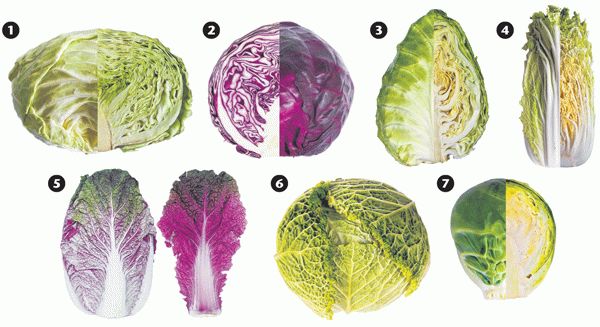

Benefits of Kale Cabbage
Proteins and fats
- This cabbage is high in protein. It contains all the essential amino acids (there are 9 of them) and 18 nonessential amino acids. It is quite possible to substitute dishes from Kale for meat on the table, besides, vegetable proteins are more easily and faster absorbed than animals and give much more benefit and energy to the body.
- The Kale cabbage contains the essential fatty acid Omega - 3. It is necessary for our body, but it does not produce it. These are the amazing leaves of kale cabbage!
Minerals
Of course, their number to some extent depends on the soil and conditions where the cabbage grows. But the basic ingredients don't change.
- Calcium. There is more of it than milk. And it is much easier to digest, since it is not burdened with casein. Calais contains calcium in an easily digestible form.
- Magnesium. Kale is very high in magnesium, like all green foods.
- The element sulforane was found in feces cabbage, which is a cure for many diseases and has an antibacterial effect.
- Indole-3-carbinol, which stops the growth of cancer cells.
- And also potassium, phosphorus, sodium, iron, zinc, selenium, copper - and all this in one cabbage!
Recent biomedical research suggests that Kale is useful in the treatment of cancer, eye diseases (especially glaucoma), and various chemical poisoning. It is a source for enhancing immunity, helps to reduce harmful cholesterol in the blood, improves stomach function, can be used in medical nutrition, as a general tonic.
Kale - cabbage or salad
Cabbage and some types of salad look the same, but they are completely different vegetables. They have significant differences in nutrient content, taste and, as a result, culinary use.
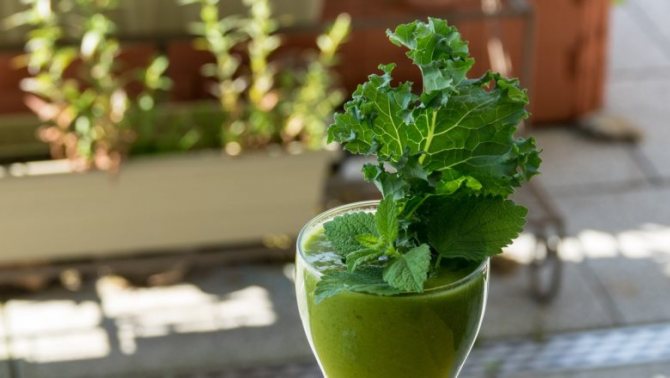

Delicious and healthy smoothies are prepared from kale
Kale for appearance is often confused with salad. But according to its botanical characteristics, this culture belongs to cabbage.Unlike lettuce, it has a stalk over which the leaves are evenly distributed or concentrated at the top. Kale has denser shoots with a stiff stem. The older the plant, the harder the base. Therefore, only the edges of the leaves are often eaten. They are also different in nutritional value and vitamin content.
The comparison table shows the amount of nutrients per 100 grams of Kale and lettuce:
| Kale cabbage | Salad, green leaves | |
| Calorie content | 49 kcal | 15 kcal |
| Protein | 3.3 grams | 1.36 grams |
| Carbohydrates | 9 gram | 1.57 grams |
| Fat | 0.9 grams | 0.15 grams |
| Cellulose | 3 grams | 1.3 grams |
| Vitamin A | 85% of the Recommended Daily Intake (RDI) | 41% of the RDI |
| Vitamin C | 133% of the RDI | 10% of the RDI |
| Vitamin K | 681% of the RDI | 105% of the RDI |
| Vitamin B6 | 14% of the RDI | 5% of the RDI |
| Folate | 7% of the RDI | 10% of the RDI |
Cabbage and lettuce are low in calories and low in protein, fat and carbohydrates. Meanwhile, cabbage contains more fiber, which is necessary for normal digestion. Kale contains more macro- and microelements than lettuce, among them - calcium, iron, magnesium, phosphorus, potassium and manganese. It should be remembered that different types of lettuce and kale have different amounts of BJU and nutrients.
Cultivation of "wild cabbage Kale"
Growing it is similar to other cabbages.
There are not very many varieties, but there are plenty to choose from. Choose the one that suits your conditions.
- Red Calais - the name is speaking, the leaves are twisted, red.
- Siberian feces - a hardy variety, withstands low temperatures, is not afraid of pests.
- Curly feces - leaves are curly, wrinkled, sweet and soft.
- Premier Calais - frost-resistant, growing rapidly.
- Dino Cale - tall, thin leaves.
- Reed feces - powerful petioles, can grow up to two meters.
Kale red variety
Usually, Kale ripens 70-90 days after germination, therefore it is not necessary to grow seedlings at home, you can sow directly into the ground under a film. Sowing is carried out in April, the temperature for seed germination is enough + 5 + 6 ° C.
And at the end of May, grown plants can be planted in a permanent place.
The place is preferably sunny, on a hill. So that water and cold air do not stagnate. Grunkol loves loose soils, with humus and ash, non-acidic.
Plants are planted at a distance of 40 cm from each other. With good care, leaf bushes can grow over a meter in height.
The main care consists in watering and loosening the earth. Like any cabbage, it is advisable to huddle it several times over the summer.
Leaves can be cut off all summer, new ones grow in place of the old ones. The leaves are stored in the refrigerator for about a week, but it is better to freeze them for storage, the taste of cabbage only improves.
If you leave a few bushes for the winter, then in the spring the cabbage will grow back and will delight you with an early harvest.
This beauty is also a kale cabbage!
Here is such an unusual Kale cabbage, healthy and tasty. It is simply necessary to grow it in every garden!
I suggest reading other interesting articles:
Feb 25, 2020 | 22:52
Didn't try Kale cabbage, and didn't even know about it. Now I will definitely try, probably it is for sale.
Feb 26, 2020 | 21:59
I tried to find it in the Semena stores, but we don't have it in Samara, we have to look in online stores.
Feb 27, 2020 | 11:13
I have never heard of such a healthy and beautiful cabbage. thanks for the interesting information.
Feb 28, 2020 | 16:10
I’m ready to argue with you a little bit, Sophia, that proteins from plant foods are absorbed better than from animal foods (in my opinion, just the opposite). And in order for all the vitamins from Kale cabbage to be fully absorbed, it must be eaten fresh and certainly with animal fats, for example, with sour cream.
Feb 28, 2020 | 18:26
Olga, in order to digest protein from meat, the body spends a lot of energy, but receives little. Not all animal proteins are digested. For a very long time, they then lie in the intestines and rot.Therefore, after eating meat, you want to lie down, and better sleep. It takes energy from our body. And the Kale salad can be made with olive oil and sour cream, to your liking.
Sep 21, 2020 | 21:11
I absolutely agree with you. Proteins can, and even preferable, be obtained from plant food - these are nuts and greens and legumes, beets, and so on, than loading your body with cadaveric products. I have nothing against meat - the taste and color as they say, all markers are different. Let everyone think for themselves and make a choice.
Sep 22, 2020 | 07:04
Hello, Elena! I am glad that you are thoughtful about your health and nutrition))))
Dec 4, 2020 | 23:18
We eat salads at the end of summer, but how to prepare it for the winter? Freeze or dry?
Feb 28, 2020 | 18:09
So curly, curly, how to wash? If grown in a greenhouse and hydroponically, then there is no problem. And in the garden? Oh, you will have to rinse like linen on the river, and then soak it in vinegar.
Mar 2, 2020 | 09:01
That's for sure - you will have to wash it from the heart. But it's worth it.
Mar 7, 2020 | 19:54
I probably won't dare to grow one with a haircut.
Mar 1, 2020 | 15:36
What does it taste like? Like regular cabbage or something else?
Mar 2, 2020 | 08:40
It is sweeter than regular cabbage.
Mar 3, 2020 | 14:10
Well, and an unusual cabbage. It seems that I always buy seeds for my mother in the spring, but I haven’t seen such a beauty, this spring I’ll take a closer look))) I also wanted to ask about the taste - does it taste closer to ordinary or Beijing? For some reason, it seems that it should resemble the Beijing one.
Mar 3, 2020 | 14:54
It is usually sold together with a decorative one like a flower! Peking is tender, and kale is more like kohlrabi in taste. Sweet, juicy.
Mar 4, 2020 | 06:30
That's really amazing cabbage! Curiosity straight! It is a pity that we do not have such cabbage on sale. Not everyone can grow it according to their abilities. But everyone would want to try it, given such usefulness. Let's try to nurture. Thank you!
Mar 8, 2020 | 15:41
The seeds can be found in online stores. I went through my garden shops, there are also no seeds.
Mar 8, 2020 | 12:47
It is strange that our people have not yet understood the charm of kale cabbage: it is easy to grow, the health benefits are invaluable, and salads and snacks with it acquire a unique taste. We need to convey such important information to people!
Mar 8, 2020 | 15:48
Yes, Nadezhda. very few people know about such cabbage. It is still a curiosity or grows as decorative.
Mar 18, 2020 | 02:06
Due to the lack of seeds of Kale cabbage. Most often it is sold under the name "ornamental cabbage" or "fodder cabbage". The color of the leaves can be like that of the covering leaves of white cabbage, it can be purple or silver. The most famous variety, perhaps, is "Lark's tongue" ( apparently because of the "curly" trills). About washing. I don’t think it’s more difficult than washing cauliflower. Leaves close to the ground are only found on seedlings or young plants (they can be sprinkled with sifted ash from leaf-eating pests, cruciferous fleas or slugs), the lower leaves are not used for food. carefully handle the garden tool and do not shake the ground on the plants, do not shake the rugs near them, then there will be no dirt. Sometimes there may be slugs in the leaves, but there are many more of them in the heads of cauliflower. So, those are a few (you won't need) of the leaves that you are going to eat can be easily inspected from the underside. Agricultural technology is no different from the agricultural technology of all cruciferous. The soil is neutral or slightly alkaline, on acidic soil it is damaged by keel. For deoxidation, use ash-branches, leaves, tops, wood, but in no case ash from household waste, plywood, chipboard, newspapers, magazines. Such ash contains many harmful substances. I would recommend on slightly alkaline, neutral and slightly acidic soils to make a glass of ash under each plant and well season the soil with humus or compost. Top dressing is done with mullein infusion or infusion of weeds ("green" fertilizer) with the addition of matchstick boxcomplex fertilizer on a bucket of infusion. The location is sunny. The distance between the plants, depending on the variety, is 50-80 cm, so it is better to plant the plants not in a garden bed, but in lines along sunny paths, among flowers (only not of the same family with them) or separate curtains 3-5 plants. Thus, you will not need to allocate a separate area. Harvest not at one time, but by repeatedly breaking off the lower leaves. In autumn, the plants take on the appearance (especially tall varieties) of small palms. A tall bare trunk and a bunch of leaves on the top of the head. .Depending on the weather, the harvest can be harvested all autumn (in the conditions of the Moscow region, sometimes in December). Try to plant, suddenly you will like it. After all, it is very simple, "like a puppy barking."
Mar 18, 2020 | 02:27
Pardon. A small clarification. The herbal infusion is first diluted with water, in a bucket of water a liter and a half of infusion and boxes of complex fertilizers.
Mar 18, 2020 | 07:27
Sergei, that's right. Any infusion, even mullein, even herbal, is added to the water when watering. I usually add a liter to a 10 liter bucket. With an infusion of chicken droppings, 0.5 liters per bucket. And I don't add complex fertilizers, only bio and organic. Let there be no gorgeous harvests, I am for healthy vegetables for my family.
May 14, 2020 | 16:51
An interesting variety of cabbage, thanks for the helpful article. as they say "live and learn" ...
May 14, 2020 | 18:29
Please, Sergey! Yes, this cabbage was also a discovery for me!
Jan 12, 2020 | 00:36
And how will it grow in the South of Crimea? In summer it is very hot here.
Jan 12, 2020 | 12:08
Most likely from the heat will bloom quickly. It was like that with broccoli this year. Summer was unusually hot and broccoli, not having time to grow to form a head of flowers, began to bloom. If there is a place in the shade, cool - try, or in early spring, while it is cool, plant.
Aug 11, 2020 | 22:10
I will repeat the link of Sophia herself to an online store for Dutch kale seeds (by the way, I bought a lot of Dutch seeds there). Good luck to everyone!
Sep 4, 2020 | 11:57
I have not even heard of such a cabbage, I must try to plant it next year.
Mar 25, 2020 | 17:27
Kale. Selling.
May 26, 2020 | 21:51
I live in America, and I assure you, this cabbage is not called "Russian". It's just Kale and that's it. Secondly, you did not write that cabbage contains a large amount of oxalic acid, which makes it dangerous for people with kidney disease and urolithiasis. They simply cannot use it!
All such, be careful - you are not a doctor, you get information from nowhere, but nevertheless give people advice as a panacea for all ills. Very irresponsible!
May 26, 2020 | 22:09
Hello Lana! You're right - I'm not a doctor. I do not give advice on treatment and any specific recipes. This information was interesting to me and I am sharing it with readers. Thanks for the additions and information on contraindications.
A bit of history
Collard greens are not at all like what we are used to seeing as cabbage. It is completely devoid of a head of cabbage and consists of leaves that can be green, scarlet or purple in color. It is also known under other names - curly, gruncol, browncol. Interestingly, no one knows exactly where Kale first appeared. The Germans believe that she is from France, the British are convinced that from Siberia, the Dutch claim that the cabbage is from Germany. There is a version that the curly sailed to America on the ships of Russian merchants and later spread to other countries.
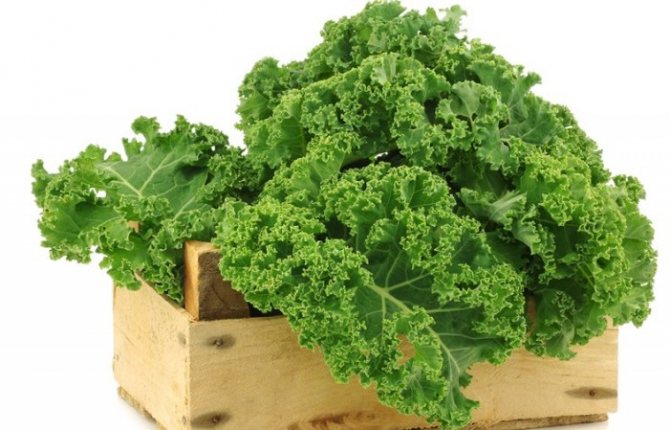

In Russia, collard greens have long served as a decorative decoration. Then they began to stew it, serve it as a side dish and salad. But is kale really as good as people say it is?
Interesting Facts
Some more information about superfood:
- In America, kale is called red Russian cabbage, although most Russians have not heard of it.
- Kale can be eaten fresh, cut into a salad, baked, and made into smoothies. But don't cook! In the process of cooking, practically nothing remains of it, since it is 85% water.
- For a long time, shoots were grown for livestock feed.
- There is another variety of kale called "Trostyanaya". It grows to almost two meters in height. Its stem is very tough. Rumor has it that canes are made of it.
Did you know you can make a cane from cabbage?
Beneficial features
Kale cabbage is a dietary product containing a whole range of substances useful for the human body. It is composed of the essential 9 amino acids found in meat, which is why curly is often called "new beef". Kale is a source of Omega 3 vitamins and minerals. If we consider the composition in more detail, then interesting facts emerge.
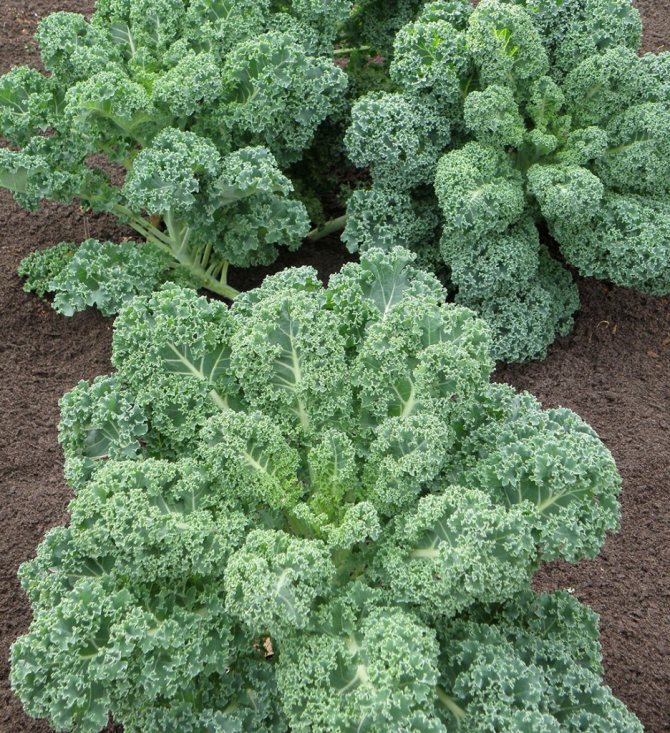

The amount of vitamin A is outrageous. In one plate - 200% of the daily value. Scientists have found zeaxanthin and lutein in this cabbage - substances that protect our eyes from harmful ultraviolet radiation. The composition includes active ascorbic acid, vitamins PP, K, group B.
Kale contains calcium in an easily digestible form, magnesium, zinc, selenium, phosphorus and Indole-3-carbinol - a compound that prevents the development of cancer.
Kale varieties
At the moment, several varieties of Calais are successfully cultivated. Moreover, all of them are strikingly different from each other in terms of external characteristics, terms of fruiting and yield indicators. Experts divide them into undersized (up to 40 cm), medium-sized (up to 60 cm) and tall varieties (80-150 cm in height). Let's get acquainted with the most popular varieties.
Reflex f1
A mid-late hybrid often used to decorate home gardens. Green leaves are characterized by excellent taste and high content of fiber, phytoncides, potassium and calcium.
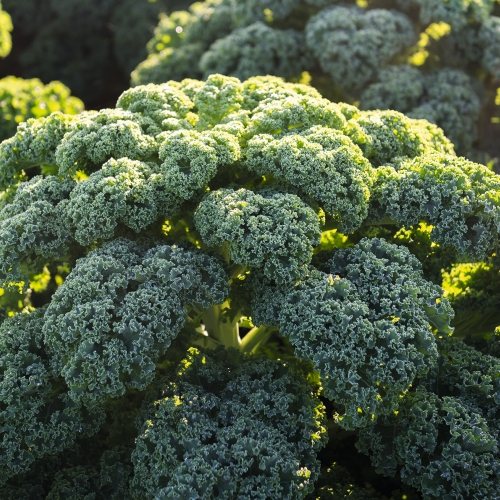

Cabbage is not bitter, it will be a good addition to fish and meat dishes.
Low calorie content (only 24 kcal / 100 g) makes this vegetable a real boon for those who want to lose weight without harming their health.
Reflex height f1 - 80 cm, weight - 500-1400 g. When planting, adhere to the 60x70 cm scheme - this is important. Never cut off the lower corrugated leaves - this can lead to the death of the hybrid.
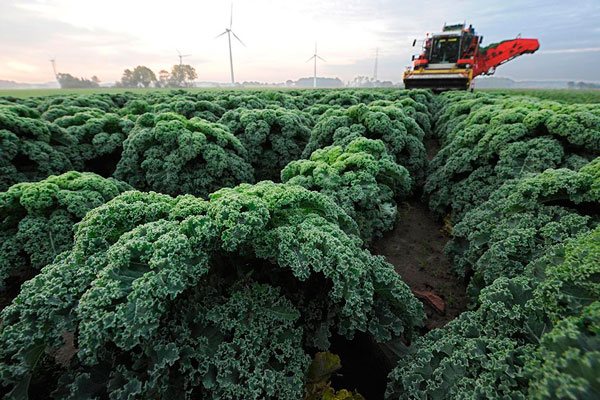

Medium late variety, reaching a height of 100 cm. The hybrid begins to bear fruit in the second year after planting. Vitamins C and A in it are twice as much as in other varieties.
The plant is highly decorative. Maroon curly leaves resemble a palm tree in appearance.
The height of the hybrid is directly related to the planting time. So, if you want it to be tall, then plant at the end of March. The color intensity is largely determined by the amount of light - Redbour f1 loves the sun. This type of Kale cabbage tolerates low temperatures well.
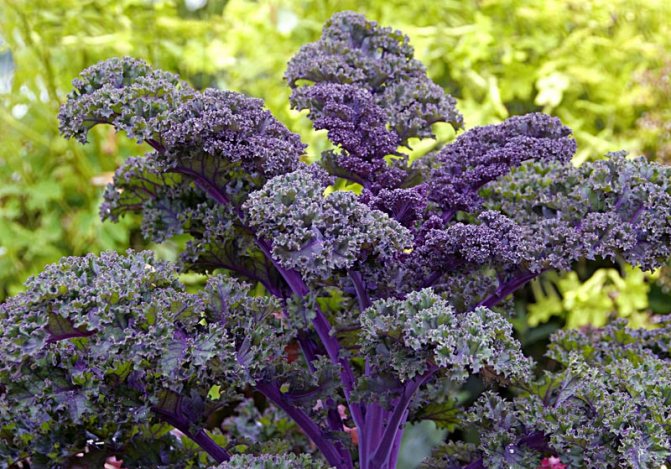

Kale red
An annual plant with openwork leaves of red-violet color. The amount of vitamin K, magnesium and calcium in it is simply off scale. Nutritionists advise including it in the diet if you want to lose extra pounds quickly and without consequences. Reaches 50-80 cm in height.
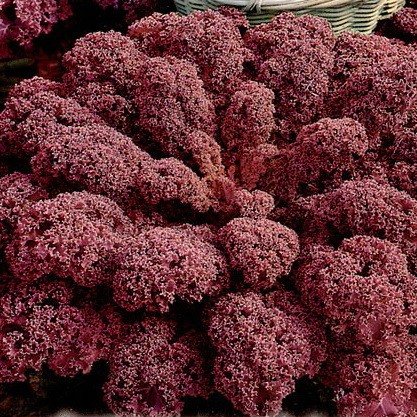

It is used both for effective decoration of ready-made dishes and as the main component of savory snacks. Grown with seedlings. The variety is picky about soil fertility. In the fall, complex fertilizers should be applied to the ground.
Black Tuscany
The variety received such an original name for the place of selection. The leaves are dark green, similar to Savoy cabbage. The length of the leaves is 25 cm, the width is 8 cm. This variety of Calais is also known under other names - Black Palm, Calais Palma, Black Tuscan. Ripens in 55-65 days.
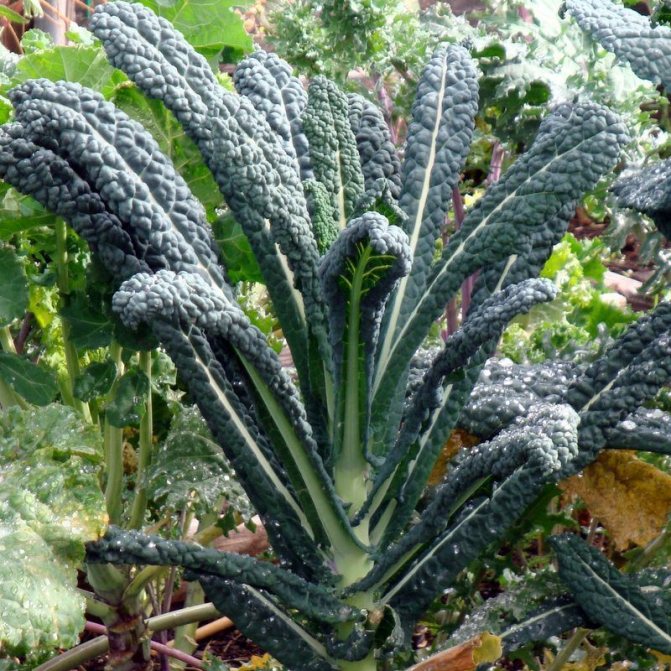

Harvested from early spring to late autumn. In the presence of favorable conditions, it grows at lightning speed. Plant where tomatoes, cucumbers and legumes used to live.Black Tuscany tolerates frost well and germinates even at a temperature of +4 degrees. Requires mineral-rich soils, moderate lighting and abundant watering.
Medium late variety, maturing in 120 days. It reaches a height of 80-100 cm. Corrugated leaves attract with a blue-violet color.
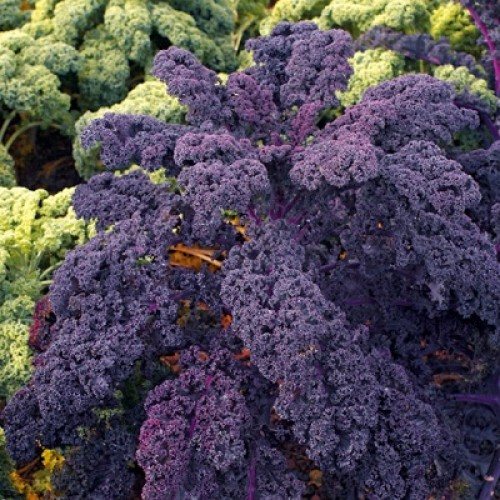

Contains a large amount of mineral salts, protein, vitamins C and A. Easily tolerates low temperatures. When growing, you should carefully monitor the moisture content of the soil - cabbage does not like drought. Seeds for seedlings are sown in January. Can be planted outdoors in April. Scarlet is widely used in cooking for salads, cabbage rolls, soups.
Variety of species and varieties
There are more than fifty varieties of this culture. They differ from each other not only in appearance, but also in chemical composition.
Curly leaves with "pimples" - the business card of kale
With such a variety, all varieties are equally useful. The most famous:
- "Red Curly"
- "Curly green"
- "Scottish Cale",
- "Italian black kale",
- "Red Russian".
Red curly
A bright cabbage with long, highly corrugated leaves. It has a dark green color, which changes to a rich purple color with the first frost. Kale red looks beautiful in a flower garden, especially after the first frost and snow. It is used for food, as well as for decorating dishes. Has a neutral taste reminiscent of white cabbage.
It grows up to 50 cm, perfectly withstands negative temperatures up to — 18 degrees. It even improves the flavor and texture of the leaf, making it softer. Matures on average in 75 days.
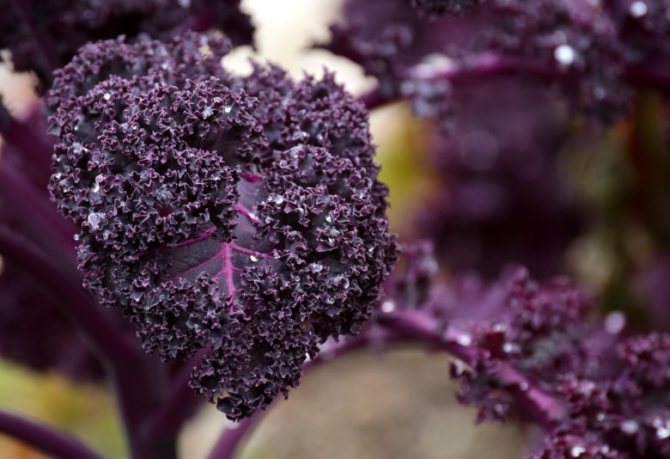

"Red curly feces"
The most common type of red curly is Redbor F1 cabbage. Its dark purple leaves are evenly distributed over the stem, which grows up to 80 cm. Another equally popular variety is Scarlet. This plant has a bright purple hue, the height reaches 100 cm.
To grow red cabbage, plant it in pots or a bed under a film, lightly sprinkling it with earth. It germinates on the seventh day at a temperature 18-20 ° C... Seedlings are not afraid of frosts; they can be planted in the sun or in partial shade. The plant needs to be watered and fed in a timely manner.
Green curly
This type is more popular than others. Collard greens look like lace. It has a mild and sweet taste compared to other species. Some varieties winter well and bring harvest the next year.
The most popular variety of green curly feces - "Reflex F1". It is included in dietary meals and as a supplement for vitamin deficiencies. This vegetable grows to 80 cm, in width reaches 50-60 cm... Another variety of collard greens - "Cadet" - is very similar in its characteristics to "Reflex".
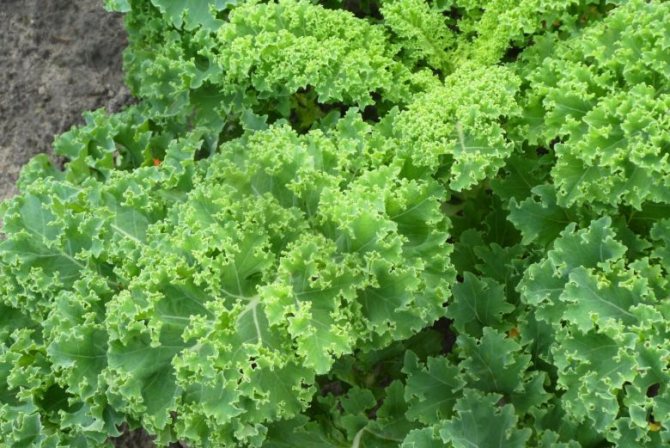

"Green curly feces"
They are eaten fresh and are also good for making pureed soups and stews. Also, green curly makes delicious smoothies. For a vitamin cocktail you will need:
- kale leaves - 4-5 pcs;
- water - 350 ml;
- celery - 2 pcs;
- spinach - 20 gr;
- banana - 1 pc;
- green apple - 1 pc;
- half a lemon;
- mint and honey to taste.
Mix all ingredients in a blender. The smoothie will turn out rich, sweet, with a lot of pulp.
What other dishes can be made from kale
Although kale itself does not have a rich flavor, and some varieties can taste bitter when raw, kale can be combined with other ingredients to make delicious, healthy and vibrant dishes.
Scottish kale
This cabbage perfectly tolerates low temperatures. It is common in countries with cold climates. The leaves of this variety are not as delicate as those of others, only slightly curly at the edges. This species has a bright green tint. Differs in early ripening, ripens for 80 days. Brings green shoots all year round.Its height reaches 90 cm.
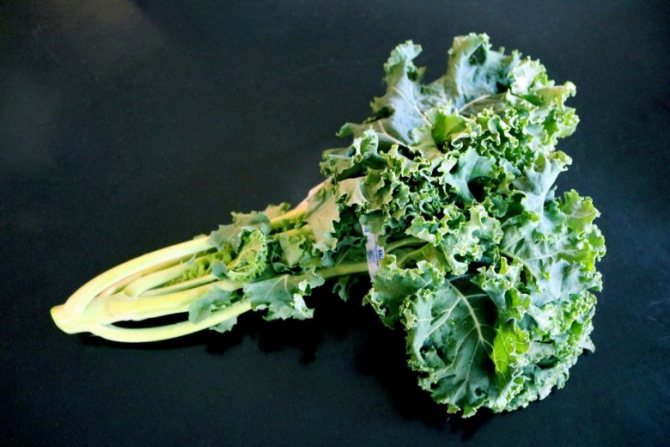

Siberian variety of cabbage kale
Also, this vegetable is called "Siberian kale". This variety differs from the Scottish only in its short stature and compactness. Scottish and Siberian varieties are used in salads, as well as freeze and make various preparations.
Italian black kale
Another Italian variety of cabbage is called "Black Tuscany". The second name is dinosaur, given for its unusual texture and color. The color of the "Tuscan" cabbage is gray-green, the leaves are oblong and long, covered with tubercles over the entire surface. The length of the leaves of black feces reaches 60 cm... This variety matures in 60 days.
Italian black kale tastes like a cross between kale and spinach
Kale Black Tuscany tastes like a cross between spinach and broccoli. Ideal for salads. Perfect for harvesting for the winter - conservation or freezing.
Red Russian
Mid-season kale hybrid. Leaf rosette reaches height 50-60 cm and consists of wavy gray-green wrinkled leaves with a beautiful carved border. The leaves are covered with scarlet veins; when frozen, they acquire a scarlet hue.
"Red Russian Calais" of a beautiful green color with scarlet veins
This variety is as cold-resistant as its counterparts, withstands up to -18 ° C... It belongs to early ripening crops, the ripening period is 2 months.
The variety is very fruitful, with delicate, sweetish leaves. "Red Russian Kale" is ideal for making smoothies.
How to plant?
Have you decided to plant kale, but don't know how to do it correctly? In fact, there is nothing complicated.
Seeds for seedlings are sown about 6-7 weeks before transfer to unprotected soil. Planting depth - no more than 1.5 cm. The optimum soil acidity is 5.5-6.8. If the acidity does not reach 5.5, then add acidic compost, if it exceeds 6.8, mix with sulfur. For seed germination, a temperature of +5 degrees is sufficient, however, the seed is most efficiently developed at +22 degrees. The interval between individual seeds is 8 cm.
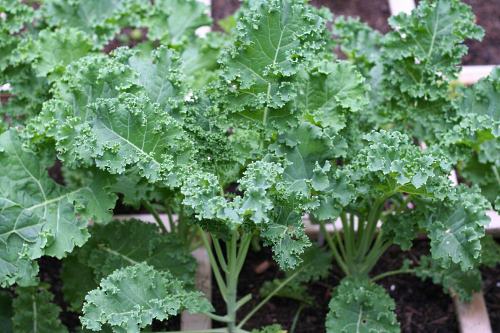

You can transplant seedlings when they grow up to 10 cm. It usually takes 4-5 weeks. The soil on the site is pre-fertilized. The preferred distance between the pits is 40 cm. By the way, the pits should be deep - reaching the first leaves. Always plant perpendicular to the surface of the soil, regardless of the shape of the root system.
Care rules
One of the most important conditions is abundant watering. The soil should be constantly moist - water daily.
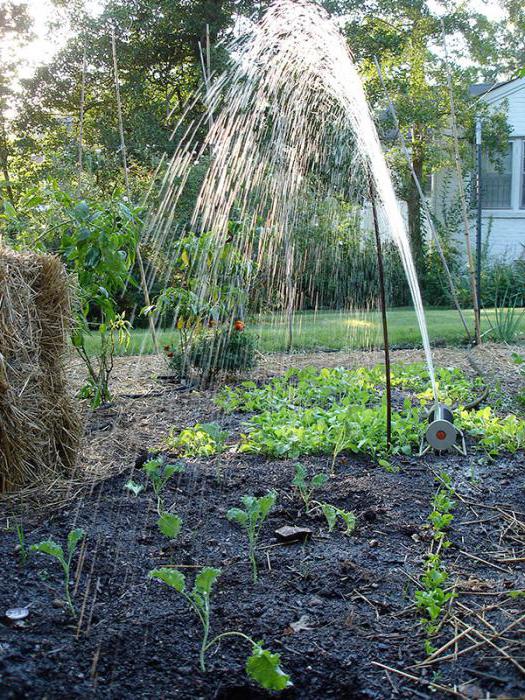

Better evening. Fertilize your cabbage every 6 weeks during the growing season to make it strong and tasty.
Kale is fed only after watering. If you notice that the leaves turn whitish or begin to rot, then mulch the plants. Remove withered leaves.
To improve oxygen supply to the roots after rain and watering, loosen the soil. Spud up from time to time. Remember to remove weeds in a timely manner. To protect against disease, cabbage should be regularly examined for diseases and pests. When you find one or the other, try to use folk methods that are quite effective, but absolutely safe.
Plant care
To grow kale on the site without any problems, it is necessary to create a special soil and climatic regime. For the active growth of the plant mass, it is important to provide Kale with good fertilizing and watering. Otherwise, the foliage will wither at the beginning of summer, and the crop will become unsuitable for consumption.
Watering and feeding
Watering and feeding is carried out regularly. The plantings are moistened at least 3 times a week, but during the summer drought, the plantings require daily watering. For this, clean and settled water, slightly warmed up to ambient temperature, is used.Water the cabbage at the root, but periodic moistening of the foliage of the feces is not contraindicated, and with moderate use, it will only have a beneficial effect on the harvest.
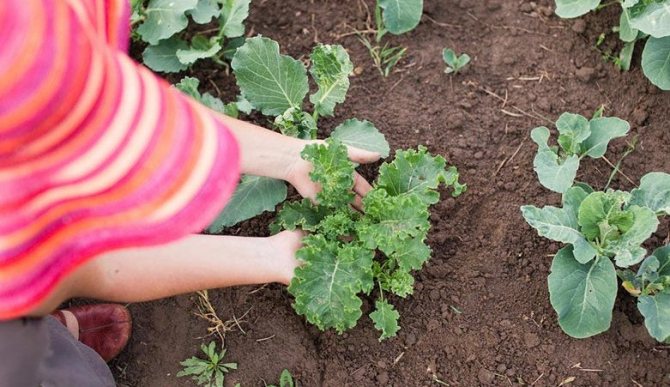

The plantings are fed every 6 weeks, until the last week of harvest. For this, a variety of highly nutritious organic mixtures are used. The most acceptable among them is a compost solution (2 kg per 10 liters of water), which is infused warm for about a day. You can replace it with a solution of cow dung (1:10) or chicken manure (1:15).
Loosening the soil
The soil under the feces is loosened regularly, at least 1 time per week, carrying out additional processing the next day after intensive watering or rains. This is necessary in order to avoid the development of weeds on the site, the toxins of which can inhibit the growth and development of cabbage. In addition, during the procedure, the soil is saturated with free oxygen, which has a beneficial effect on plant growth. The procedure is carried out using standard garden tools (glanders), to a depth of no more than 5–8 cm.
Diseases and pests
With strict adherence to agricultural cultivation, Kale is rarely affected by any pests and diseases, but often many gardeners still face this problem.
Most often, cabbage is affected:
- black leg;
- alternaria;
- sclerotinia;
- phomosis;
- aphid;
- bedbugs;
- flea beetles;
- cabbage moth.
To prevent the development of infections and pests, plantings are treated with complex protection preparations once a month for prophylactic purposes.
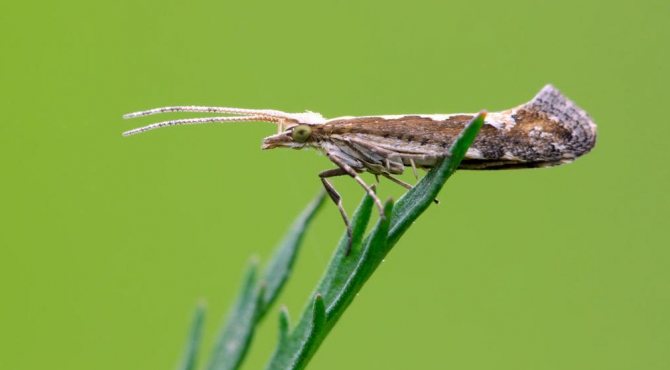

Most often, all kinds of folk remedies are used for this, among which the most popular are:
- spraying with onion infusion - 500 g of husk per 3 liters of boiling water;
- treatment with 7% vinegar - it is prepared from 1 liter of vinegar, 150 g of chicken droppings and 10 liters of water;
- dusting with wood ash or tobacco dust.
Important! It is not recommended to treat feces with chemical preparations - they are often inactivated for a long time on the surface of the foliage, which saturates the crop with toxic decay derivatives.

